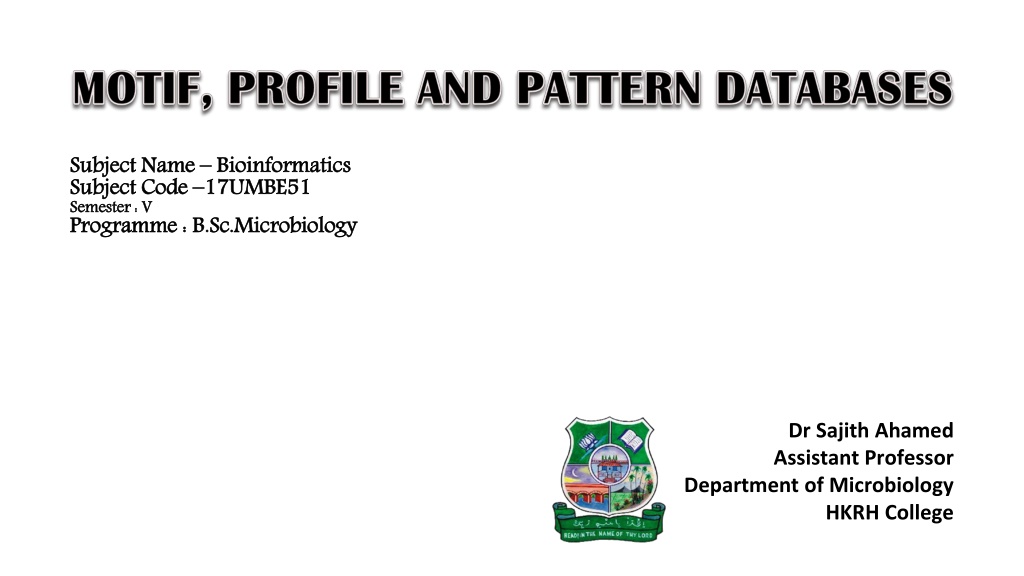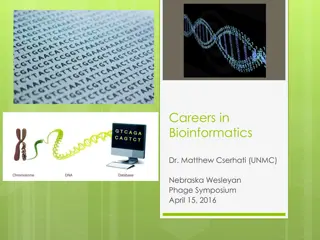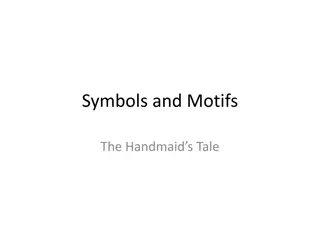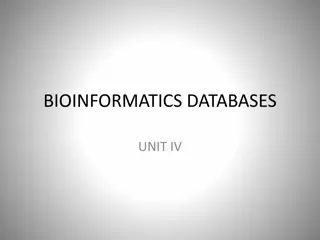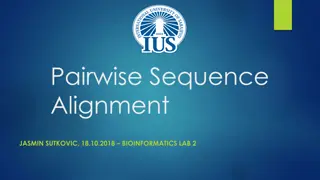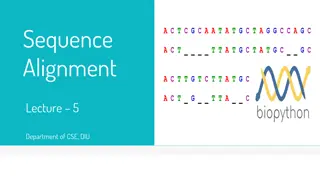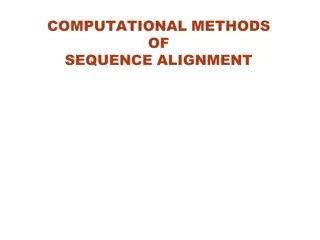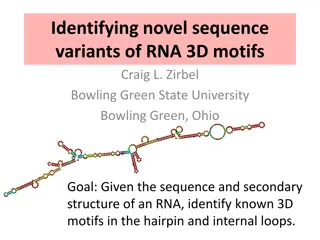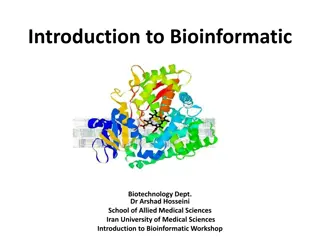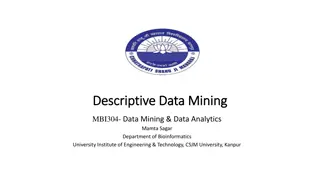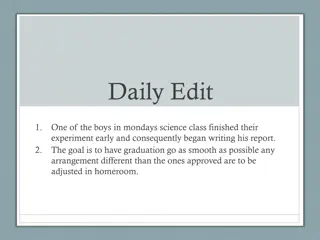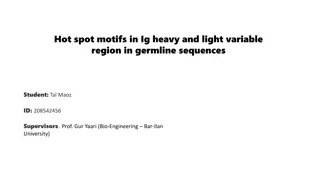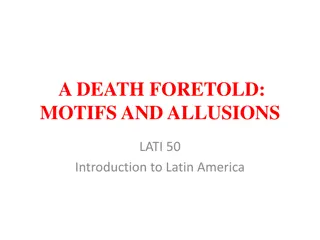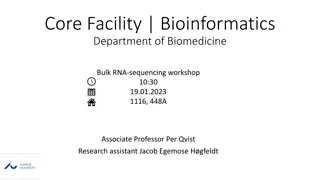Understanding Motifs in Bioinformatics
Bioinformatics studies the patterns of sequences called motifs, which play significant roles in biological functions. Conserving information from DNA or proteins, motifs can be predicted de novo using various tools and strategies. Exploring these motifs aids in understanding regulatory elements and functional regions within biological sequences.
Download Presentation

Please find below an Image/Link to download the presentation.
The content on the website is provided AS IS for your information and personal use only. It may not be sold, licensed, or shared on other websites without obtaining consent from the author. Download presentation by click this link. If you encounter any issues during the download, it is possible that the publisher has removed the file from their server.
E N D
Presentation Transcript
Subject Name Subject Code Semester : V Programme : Subject Name Bioinformatics Subject Code 17UMBE51 Semester : V Programme : B.Sc.Microbiology Bioinformatics 17UMBE51 B.Sc.Microbiology Dr Sajith Ahamed Assistant Professor Department of Microbiology HKRH College
Motifs Defined as a nucleotide or amino acid sequence pattern that is widespread and is associated with a biological function. A sequence motif = A structural Motif. A sequence motif residing in the coding region may encode a structural motif. Non-coding nucleotide motifs may have regulatory role. May have recognition sites for DNA binding proteins.
Motifs, profiles and patterns C[TA]TTG{X} C T T T G X Conserved region of a DNA or protein Motif Qualitative expression of a motif Pattern Regular Expression C[TA]TTG{X} C A T T G X [TA] C T T G any Quantitative expression of a motif Profile Position Specific Scoring Matrices (PSSMs) Weightmatrices
Motifs/Patterns N{P}[ST]{P} [FILV]Qxxx[RK]Gxxx[RK]xx[FILVWY] [] -> or (Probability information is lost) {} -> Not () -> repeated ^ -> Beginning
De novo prediction of Motifs MEME; EXTREME; AlignAce, Amadeus, CisModule, FIRE, Gibbs Motif Sampler, PhyloGibbs, SeSiMCMC, ChIPMunk and Weeder.SCOPE, MotifVoter, and Mprofiler MEME (Multiple Expectation Maximization for Motif Elicitation)
MacIsaac KD, Fraenkel E (2006) Practical Strategies for Discovering Regulatory DNA Sequence Motifs. PLoS Comput Biol 2(4): e36. doi:10.1371/journal.pcbi.0020036 http://journals.plos.org/ploscompbiol/article?id=info:doi/10.1371/journal.pcbi.0020036
MRLSFVPLLQLSRLVVSTQHSTKMSTVYRTCKMNEIALSLLAPTQPLDADQGVMSPMASSDQMRLSFVPLLQLSRLVVSTQHSTKMSTVYRTCKMNEIALSLLAPTQPLDADQGVMSPMASSDQ TTSIGDFRFLRTHHDKEERGLLVTSLTKGLAETSFPYR YTSMCATICSITHSRADAAPAKQAH
Scan this sequence and get me the motif ATGCGTCTCTCCTTCGTTCCACTACTGCAGCTCTCTCGTCTGGTCGTTAGCACACAACATAGTACGAAAATGA GCACAGTATACCGTACCTGCAAAATGAATGAAATAGCTCTCTCGTTGCTGGCGCCAACGCAGCCATTGGACG CTGACCAGGGTGTTATGTCACCGATGGCCTCATCAGACCAGACAACCTCAATTGG GAACCCACCACGATAAAGAAGAGCGGGGCTTGCTGGTTACCAGCCTCACAAAAGGTTTGGCTGAAACATCAT TTCCGTATCGATACACTTCGATGTGCGCAACTATTTGTTCAATTACGCATTCTCGGGCAGATGCTGCGCCTGC GAAGCAGGCGCACTA TGACTTTCGGTTCCTGA OR Build aPSSM ATGCGTCTCTC ATGCGTCTCTC ATGCGTCTATC ATGCCTCTGTC ATGCGTCTCTC
